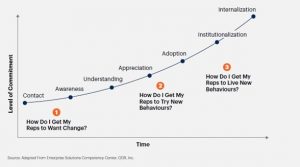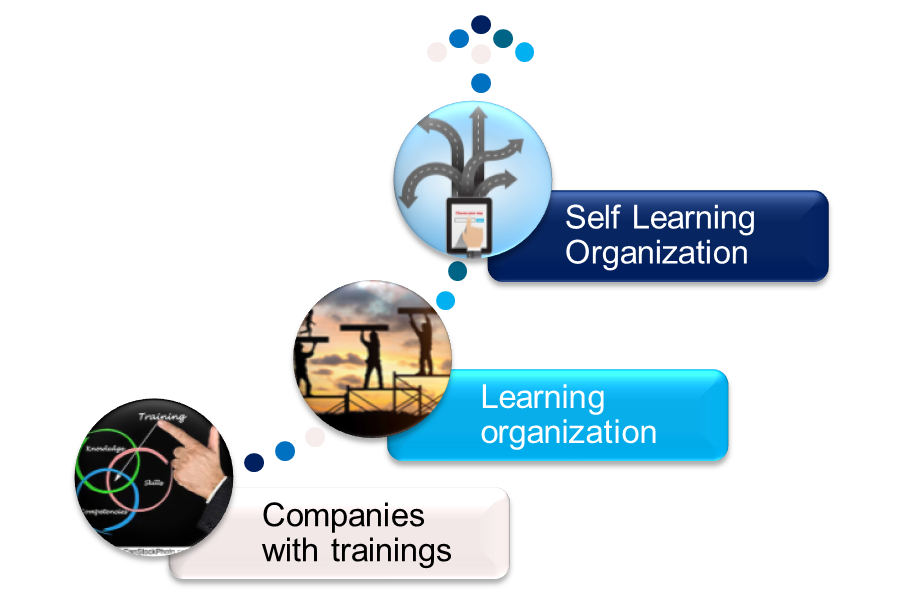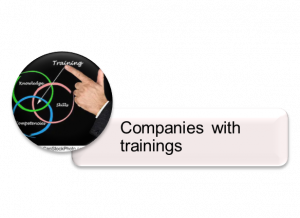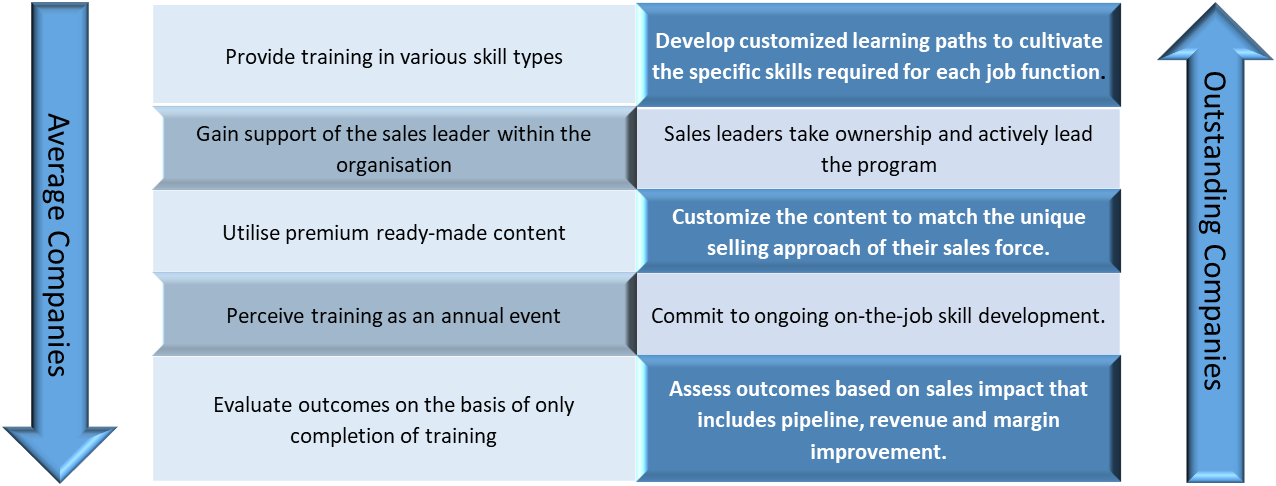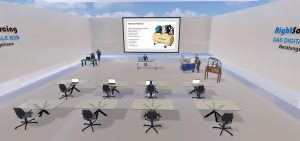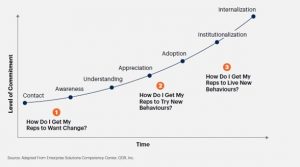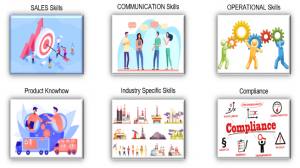- Article, English, RS Internal
- Suchi Shinde
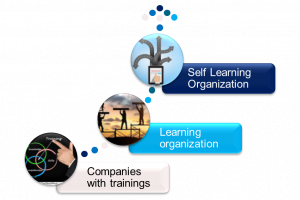
Excellence in Sales Education
The VUCA world extends its influence beyond just changing the learning processes for adults across various roles and industries. Even sales professionals find themselves lacking certain essential skills, which underscores the importance of sales training and coaching. External factors, such as evolving customer decision-making processes and advancing technologies, are driving the demand for new sales skills. This shift has moved away from solely concentrating on individual skills, emphasizing the necessity to nurture a culture of ongoing learning and growth within organizations. Building and evolving sales capabilities is essential for businesses to achieve sustainable growth and remain competitive in an ever-changing market.
Welcome to this collection of articles focusing on Excellence in Sales Education. In this series, we will explore top-notch practices, the most current trends, and hands-on advice for creating and executing outstanding sales training programs. By doing so, we aim to progress toward the development of a self-learning organization.
A contribution by Suchi Shinde and Prof. Dr. Markus Hesse, Oct 2023
In our 1st Article, let’s take a high-level view on How can you transform a sales organization into a holistic one, evolving it from a traditionally trained entity into a learning organization and ultimately into a self-learning organization? (Picture 1)
Picture 1: A holistic approach to developing a Self-learning Organization.
Rightsourcing has assessed numerous training programs carried out over the last 8 years, conducted customer research, incorporated industry best practices, and seamlessly integrated the newest learning concepts and latest technology to shape this holistic approach.
Many organizations provide training for their salesforce, typically on an as-needed basis, covering specific topics related to product or tool updates. Additionally, ad-hoc sales skill-related training sessions are also conducted. On occasion, post-training quizzes are employed as a means to gauge the effectiveness of training outcomes.
A learning organization possesses a clear roadmap for building capabilities and has an established framework for executing this roadmap. This framework includes a strategy for conducting skill gap analyses, delivering formal training, providing coaching, and implementing a change program to promote adoption. Measuring the post-training impact is done through well-defined metrics and assessment methods.
A self-learning organization promotes ongoing learning through immersive digital media, where self-organizing teams engage in goal-oriented, personalized learning with coaching tailored to their needs. Particularly for Generation Z, 24/7 access to micro-learning in the digital realm, available on-demand, could prove to be highly effective. Consistently conducting self-assessments serves as motivation for self-planning future training sessions. There is a significant transition from passive learning to active learning – moving from a more receptive mode of learning to one where learners actively participate, apply what they’ve learned, and interact with the content and their peers.
By scrutinizing the initial phase in which companies provide training, valuable insights can be gained for achieving excellence. Organizational trainings at average companies and outstanding companies can vary significantly in terms of their design, effectiveness, and impact on employees. Certainly, at a higher level, here are some key differences between companies that are average at training and those that are outstanding. (Picture 2)
Picture 2: Training programs at Outstanding Companies /1/
Outstanding companies view training and development as a strategic advantage and invest in creating a culture of continuous learning and improvement. They recognize that well-trained employees contribute significantly to the organization’s success. Average companies, on the other hand, may view training as a cost rather than an investment and may not fully realize the potential benefits of comprehensive training programs.
Stay tuned for our next Article where we will discuss practical steps towards building a Learning Organization.
References:
Rightsourcing Newsletter in Ihre Postfach. Melden Sie sich für unseren Newsletter an und Sie erhalten regelmäsig Updates in ihr Postfach. Natürlich können Sie ihn jedezeit abstellen.
Erhalten Sie die neuesten Updates zu Geschäftstrends und Technologie

Digitale Transformation im Vertriebstraining: Auf dem Weg zur Selbstlernenden Organisation
Weiterlesen »